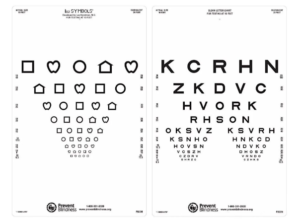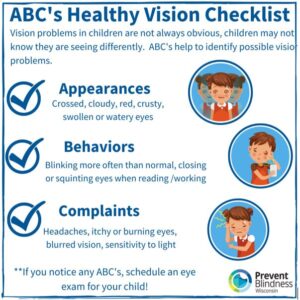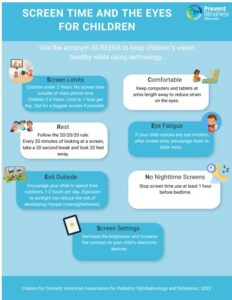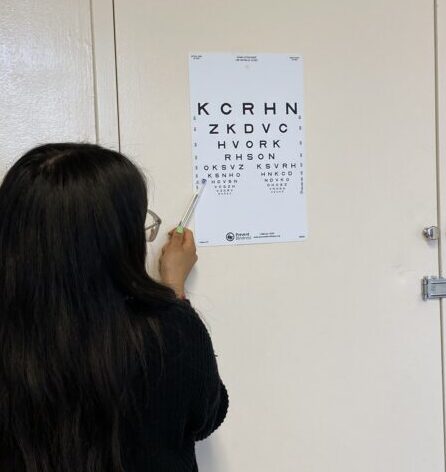Importance of Vision Screenings for Children ages 5-18
1 in 4 school-aged children have a vision problem. Vision screenings are important for academic success, improved athletic performance and to positively support a child’s mental and emotional well-being. Children that have difficulty seeing often do not realize they are viewing the world differently. This can lead to vision concerns in children going unnoticed and results in delays in treatment and needed vision care.
If a child is diagnosed with a vision concern, it is extremely important to follow the recommended treatment plan (i.e. wearing glasses or contacts). Wearing the specified prescription can prevent the current vision concern or problem from becoming worse for the child.
What is a Vision Screening?
A vision screening is a brief test that checks a child’s visual acuity. Visual acuity measures how sharp a person’s vision is. To test visual acuity, the child identifies a specified number of black letters or symbols on a white background at a standardized distance. A vision screening is a preventative public health approach to flag children for a possible vision problem and refer them to further care for a dilated eye exam with an eye care provider.
What do we detect when vision screening the school–age population?
The goal of vision screening school-aged children is to detect refractive errors (myopia, hyperopia, and astigmatism). Early diagnosis and treatment of vision disorders will allow for more normal visual development and help decrease the impact of poor school performance, developmental delays, and behavioral challenges.
What are approved vision screening approaches for school-aged children?
The Sloan Wall Chart is the approved method of vision screening for school-aged children. Each eye is occluded individually, and the child is measured at a 10-foot testing distance. The Sloan Wall Chart tests a child’s visual acuity, or how sharp vision is at a standardized distance. There are two sides to the Sloan Wall Chart. One side shows letters and one side shows shapes, both are approved for vision screening.

ABC’s of Vision Health

Common Vision Conditions
A refractive error is a defect in the optics of the eye that results in lack of precise focus of the light rays on the retina causing a blurred image.
Hyperopia: (hi-per-OH-pea-uh), Or farsightedness, is a type of refractive error. Hyperopia is a vision condition in which near objects appear blurred – such as books or toys- but objects in the distance remain clear. Children with severe farsightedness may also experience crossed eyes, eyestrain, and a reduced quality of life.
Hyperopia Treatment: Some children will require glasses to help correct their hyperopia. Other children may outgrow their need for glasses as they get older. Your ophthalmologist or optometrist will work with you to identify the right treatment plan for your child.
Myopia: Or nearsightedness, is a type of refractive error. Myopia occurs when distant objects are blurred, while objects up close are seen with more clarity.
Myopia Treatment: Myopia becomes evident in children between the ages of 8-12 years old. The rate of myopia is increasing rapidly. By 2050, it is predicted that half of the world population will have myopia. This is due to overexposure and use of screens/digital devices and lack of time spent outdoors. Glasses are most commonly used to treat myopia in children.
Astigmatism: Astigmatism occurs because there is an irregular curvature of the cornea preventing light rays from focusing on a single point on the retina. Most corneas have some degree of astigmatism. However, as the curvature of the cornea becomes more uneven, image distortion increases. An astigmatism is often inherited and is more prevalent in children in the Hispanic/Latino and Asian population.
Astigmatism Treatment: Children will often need glasses to help correct their astigmatism. Your ophthalmologist or optometrist will work with you to identify the right treatment plan for your child.
Kid’s Glasses 101
- Wear glasses as prescribed by your child’s eye doctor
- Keep glasses clean, use a soft, towel to wash and dry glasses
- Store glasses in their case when they are not being worn
Kid’s Take it Outside
According to the American Academy for Pediatric Opthalmology and Strabismus (AAPOS) use the SCREENS acronym to set safe screen time limits for your children.

To download the SCREENS handout click here: AAPOS Screen Time for Children
